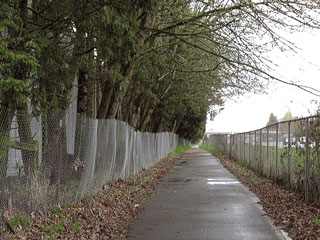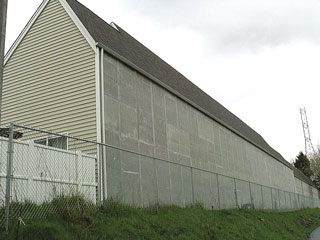

In many areas of the country, competitive use of land means that residential areas are being developed next to highways. This proximity is a benefit for residents, because it helps increase their mobility.
Today many cities feature well-designed residential developments near highways. One example is Eugene, Oregon. Community leaders in Eugene are aware of the impact of noise pollution on adjacent residential development. While no official rules govern residential development near major arterials in Eugene, developers consistently work to reduce the negative impacts of noise from nearby roadways and freeways. Open space buffers are widely used along I-5, a north-south arterial in the city’s east side.
Another important method of noise abatement used in Eugene involves the positioning and design of buildings. Along I-5, developers designed multi-family buildings with no windows on the sides facing highways. One development of townhomes is uniquely constructed to curb the noise from I-5, which is directly behind the units. In addition to the solid blocks used as the outside building surface, several layers of high quality, sound-absorbent insulation almost eliminates roadway noise from the interior of the townhomes. Also, a row of existing trees was left to serve as a visual buffer.
Developers in Houston address the negative impacts of noise and the visual effects along roadways. Although Houston has no zoning or ordinances requiring design modifications in such locations, the developers use the design of their developments to lessen the impact of highway traffic noise. Homes are designed so they do not face the freeway right-of-way (ROW). Homes that back-up to the ROW are completely bricked on the rear exterior surfaces. This serves two purposes: (1) visually the homes are more desirable because of the greater quantity of brick exterior and (2) the presence of the brick material minimizes the effects of traffic noise. Another design feature that minimizes noise is increasing the height of the residential property fences facing the ROW. Fences facing the ROW are 10 feet tall, as compared to 6 feet throughout the remainder of the housing development, providing both mitigation and privacy.